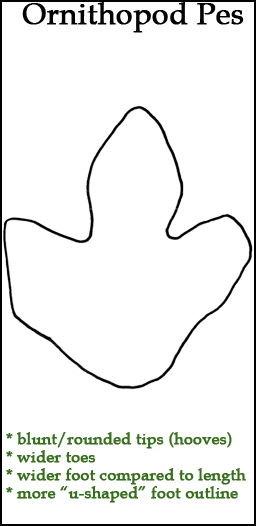Boy Stumbles Across Dinosaur Footprints
Yorkshire Lad goes “Walking with Dinosaurs” (Dinosaur Footprints Discovered)
For many palaeontologists discovering a perfectly preserved set of dinosaur footprints may mark a high point in their careers but for young Rhys Nichols of Scarborough finding dinosaur trackways is as easy as taking a walk along the beach.
Whilst walking with his father, on the beach at Burniston Rocks, north of the seaside resort of Scarborough on the North Yorkshire coast, Rhys noticed that part of cliff face had fallen away and it was here that he found the footprints. Rhys’ very proud father, Richard stated that “Rhys loves dinosaurs so for him to find something like that was wonderful. He was over the moon – I couldn’t get him away from it!
Dinosaur Footprints
“We are always coming down here beach-combing and hunting for fossils.”
Experts have agreed that these fossil prints are a “great find”. The footprints are what is known as a trace fossil. Trace fossils preserve evidence of the activity of animals, such as their tracks; unlike many dinosaur fossil bones that may have been transported after death a long way from where the dinosaur originally lived, most trace fossils such as these prints are direct “in situ” evidence of the environment at the time and the place where the dinosaurs roamed.

Line drawing of the hind footprint of a large ornithopod (iguanodontid). Picture credit: Everything Dinosaur.
Picture credit: Everything Dinosaur
Pictures show two beautifully preserved fossil footprints with the three toes of dinosaur seen clearly. The raised appearance of the fossil is typical of this sort of trace fossil. Footprint fossils can either be a depression-type fossil made by the weight of the animal or a cast of the “hole” made by the animal’s foot as it walked along. Sediments can fill the print up and it is these that are fossilised and the cast preserved giving the raised appearance. Mr Nichols measured the footprints estimating that they were around 21 cm in diameter, other footprints have been found but they had been heavily eroded.
Fossilised Trackways
A number of fossilised dinosaur trackways have been found in the North Yorkshire area , much of the coast of the North East from Scarborough to near Redcar is comprised of exposed areas of delta mudstone and sandstone and thin coals that were laid down in the Middle Jurassic approximately 160 million years ago. The rock strata where the prints have been found is well known for producing dinosaur trackways and isolated footprints, in fact geologists term this strata as the Burniston Footprint Bed. As blocks of silty sandstone fall onto the beach, split apart from the cliff face by erosion, these blocks frequently come to rest at the base of the cliff upside down revealing the finely detailed tracks of dinosaurs from the Jurassic period.
It is not known what actual species of dinosaur made the prints, as with most fossil trackways, unless the culprit is found fossilised at the end of the trackway, Ichnologists (scientists who specialise in studying tracks), can only speculate what sort of creature it was. Local museum staff have stated that this dinosaur may have been an Iguanodon. The three-toed prints are indicative of an Iguanodontidae, however, the mid Jurassic date is very early for such an animal, more normally associated with the Early Cretaceous. Perhaps it could be a trackway made by a dryosaur, these animals grew to lengths in excess of 3 metres, were relatively light and had a bi-pedal stance. Dryosaurs seem to have been relatively ubiquitous, with fossil being found in both the Northern and Southern Hemispheres. Like many trackways the scientists may just have to resort to referring to these wonderfully, well preserved prints as belonging to an “in-determinant ornithopod”.
Three Toes Clearly Observed
Photographs show a close up of the footprint shown in the foreground in the picture with Rhys. The animal would have been walking from right to left as the page is viewed. The three-toes can clearly be seen, but there is little evidence of a claw mark, adding weight to the thought that this is the footprint of an ornithopod. Based on comparisons with the fossils of ornithopods such as the large amount of Iguanodontidae material available, it has been estimated that the dinosaur walking across the delta 160 million years ago would have been roughly the same size as young Rhys. It is not known whether the animal was a fully grown adult or juvenile. The pictures of the footprints indicate a bipedal stance, but as to what actual animal made these tracks, this will probably remain a mystery, unless of course Rhys happens to find another set of prints whilst beach-combing but this time with the fossils of the dinosaur which made them at the end of the track.
Here’s hoping… in the meantime well done to Rhys, palaeontology remains the only science where by going for a walk you can change the way the world views itself.
Everything Dinosaur stocks a wide range of ornithopod models and figures: Everything Dinosaur – Dinosaur Models and Figures.

